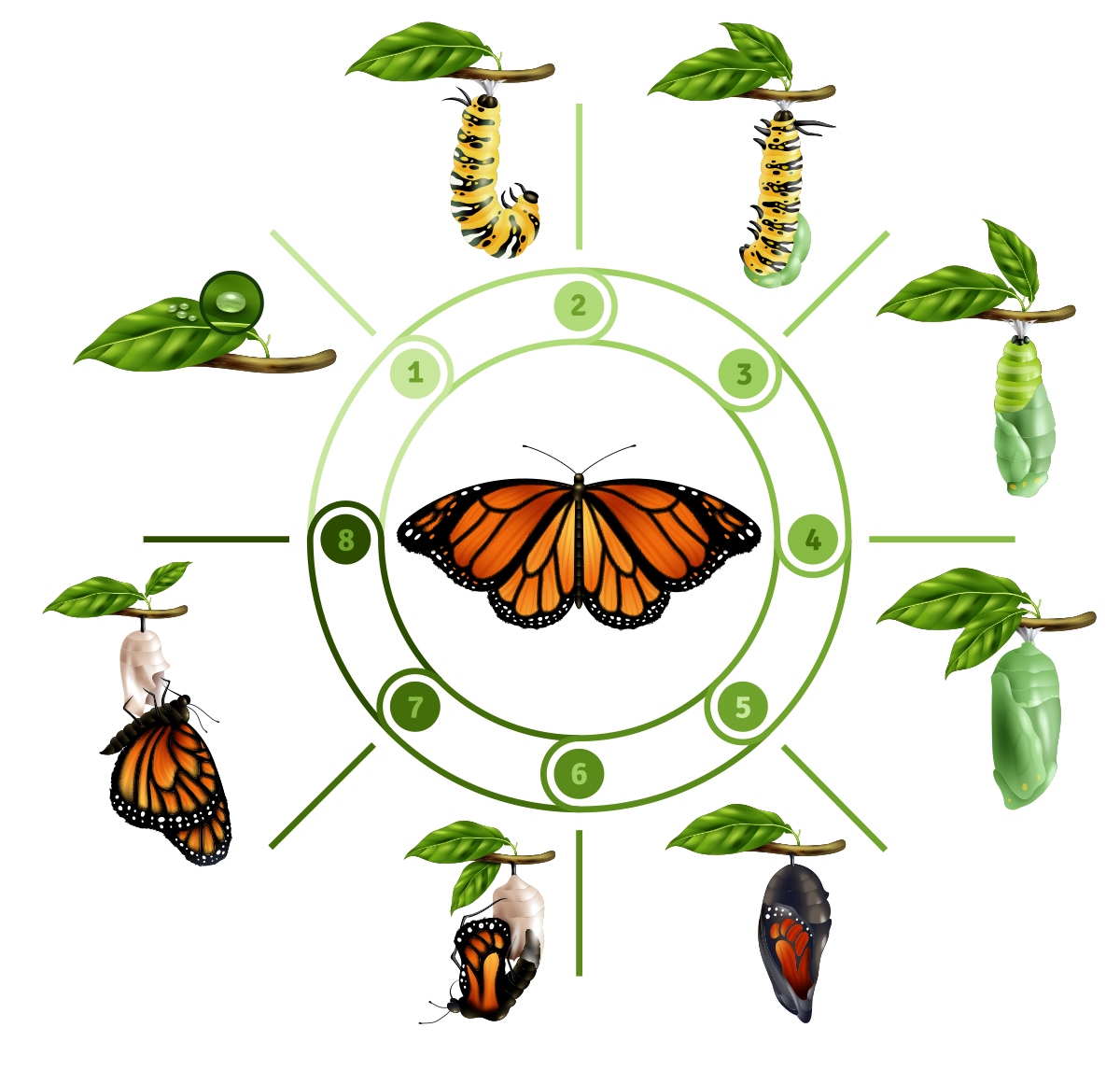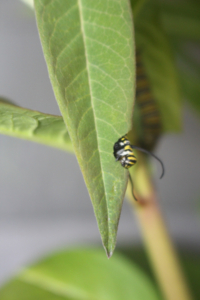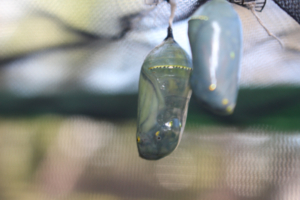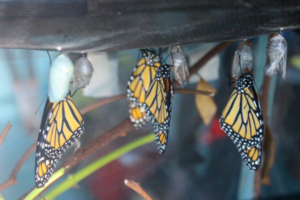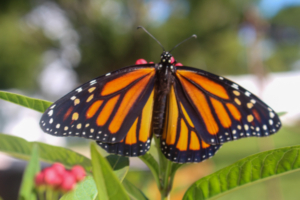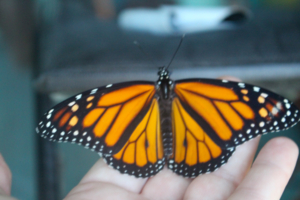Monarch Butterfly Life Cycle
Monarch development from egg to adult is completed in about 30 days.
Egg (3-4 days)
Monarchs usually lay a single egg on a plant, often on the bottom of a leaf near the top of the plant. It is difficult to tell just how many eggs each female will lay during her life, but the average is probably from 100 to 300. The eggs hatch about four days after they are laid.
Approximate dimensions: 1.2 mm high; 0.9 mm wide
Larva (Caterpillar; 10-14 days)
It is during this stage that Monarchs do all of their growing. They begin life by eating their eggshell and then move on to the plant on which they were laid.
When the caterpillar has become too large for its skin, it molts or sheds its skin. At first, the new skin is incredibly soft and provides little support or protection. The new skin soon hardens and molds itself to the caterpillar, which often eats the shed skin before starting in anew on plant food! The intervals between molts are called instars. Monarchs go through five instars (see photo). Approximate length of the body at each stage: 1st instar, 2-6 mm; 2nd instar, 6-9 mm; 3rd instar, 10-14 mm; 4th instar, 13-25 mm; 5th instar, 25-45 mm.
Pupa (Chrysalis; 10-14 days)
During the pupal stage, the transformation from larva to adult is completed. Pupae are much less mobile than larvae or adults, but they often exhibit sudden movements if they are disturbed. Like other butterflies, Monarch pupae are well-camouflaged since they have no other means of defense against predators.
Adult
The primary job of the adult stage is to reproduce – to mate and lay the eggs that will become the next generation.
Females begin laying eggs right after their first mating, and both sexes will mate several times during their lives. Adults in summer generations live from two to five weeks. Each year, the final generation of Monarchs, which emerges in late summer and early fall, has an additional job: to migrate to their overwintering grounds, either in central Mexico for eastern Monarchs or in California for western Monarchs. Here they survive the long winter until conditions in the United States allow them to return to reproduce. These adults can live up to eight or nine months.
Male and female Monarchs can be distinguished easily. Males have a black spot (see photo) on a vein on each hind wing that is not present on the female. These spots are made of specialized scales which produce a chemical used during courtship in many species of butterflies and moths, although such a chemical does not seem to be important in Monarch courtship. The ends of the abdomens are also different in males and females, and females often look darker than males and have wider veins on their wings.
No growth occurs in the adult stage, but Monarchs need to obtain nourishment to maintain their body and fuel it for flight. Nectar from flowers, which is about 20% sugar, provides most of their adult food. Monarchs are not very picky about the source of their nectar and will visit many different flowers. They use their vision to find flowers, but once they land on a potential food source, they use taste receptors on their feet to find the nectar.
The butterfly lays eggs on milkweed leaves.
The egg hatches into a caterpillar.
They eat a lot of milkweed and grow over 3,000 times.
The caterpillar wraps itself into a cocoon, called a chryalsis.
Inside the cocoon the caterpillar undergoes metamorphosis
Once the butterfly is mature it will emerge from the chrysalis

